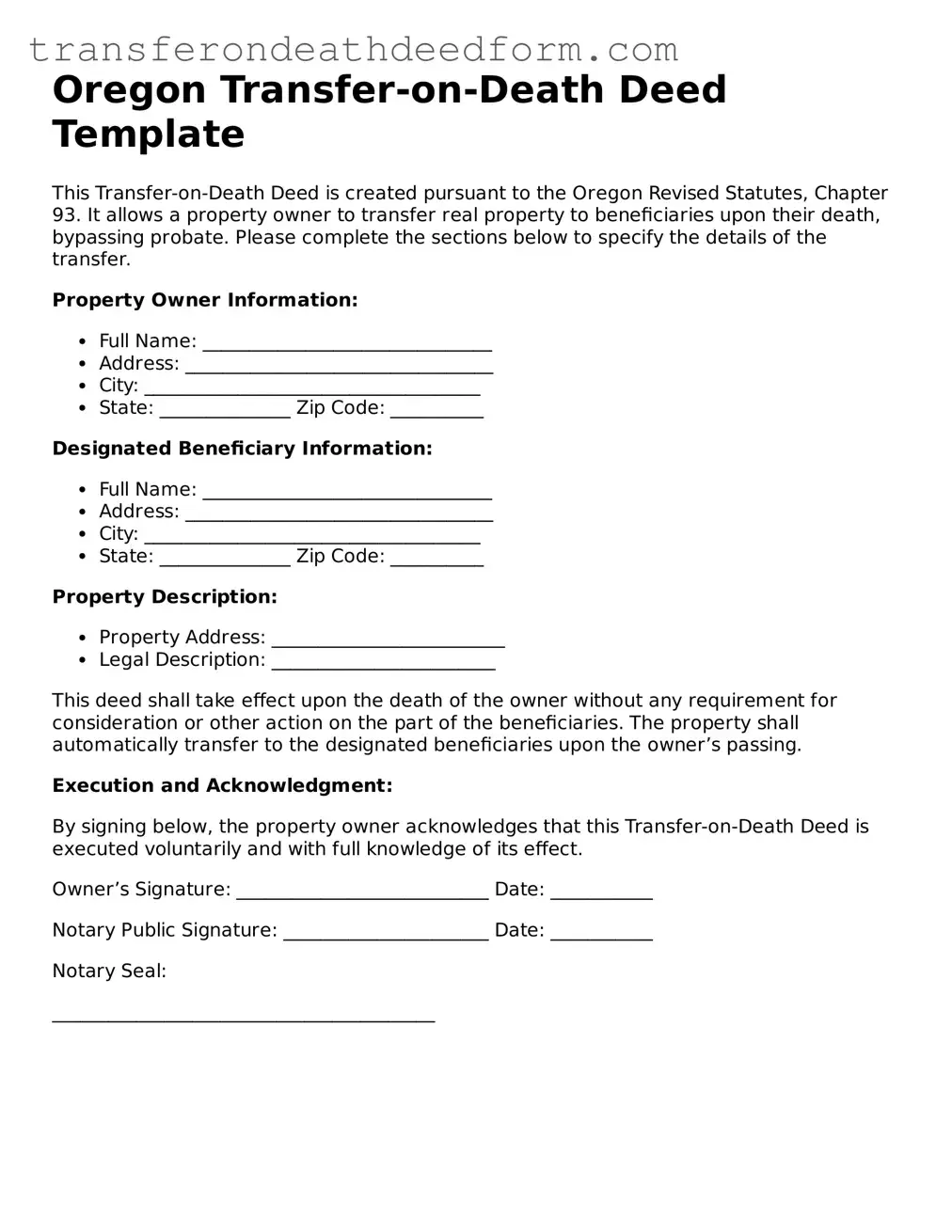Oregon Transfer-on-Death Deed Template
This Transfer-on-Death Deed is created pursuant to the Oregon Revised Statutes, Chapter 93. It allows a property owner to transfer real property to beneficiaries upon their death, bypassing probate. Please complete the sections below to specify the details of the transfer.
Property Owner Information:
- Full Name: _______________________________
- Address: _________________________________
- City: ____________________________________
- State: ______________ Zip Code: __________
Designated Beneficiary Information:
- Full Name: _______________________________
- Address: _________________________________
- City: ____________________________________
- State: ______________ Zip Code: __________
Property Description:
- Property Address: _________________________
- Legal Description: ________________________
This deed shall take effect upon the death of the owner without any requirement for consideration or other action on the part of the beneficiaries. The property shall automatically transfer to the designated beneficiaries upon the owner’s passing.
Execution and Acknowledgment:
By signing below, the property owner acknowledges that this Transfer-on-Death Deed is executed voluntarily and with full knowledge of its effect.
Owner’s Signature: ___________________________ Date: ___________
Notary Public Signature: ______________________ Date: ___________
Notary Seal:
_________________________________________
